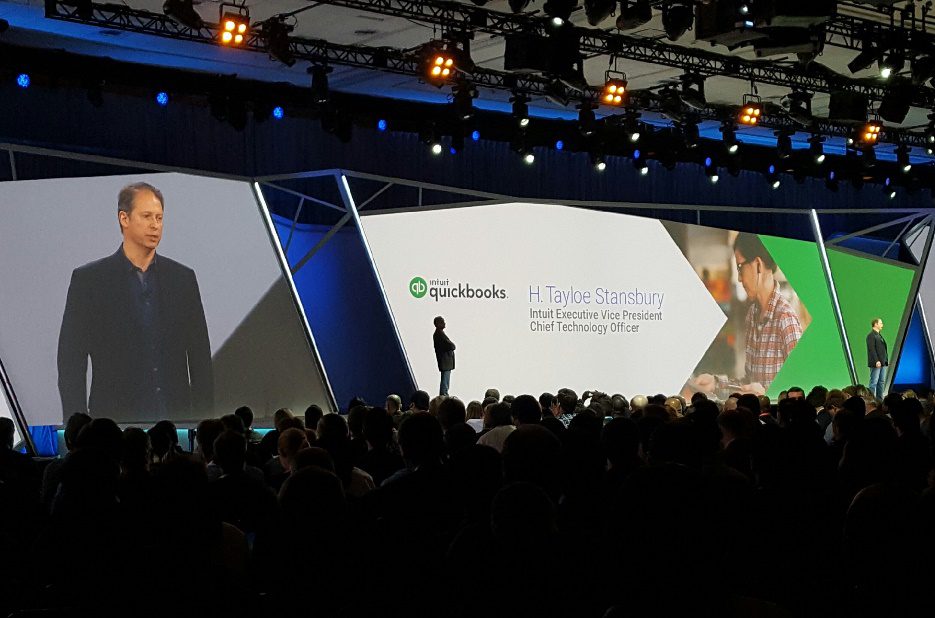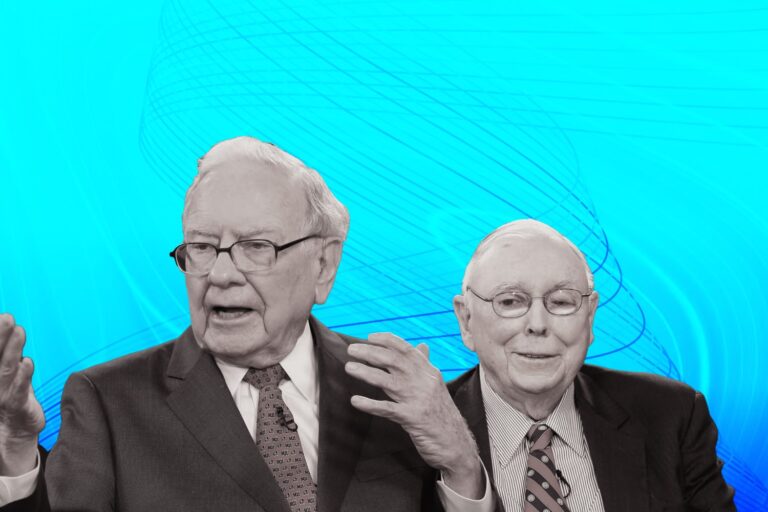Intuit’s Success: How Does It Reinvent Itself & Embrace the “Innovator’s Dilemma”?
Beyond any doubt, in the light of the “black-swan” COVID-19 epidemic, 2020 has been a year of chaos, uncertainty, and grief for every single business around the globe. Though, whereas a myriad of businesses has been struggling just to survive, the software company Intuit is in its eleventh year of stock gains, up 36% in 2019 – an undeniably impressive run for any company in a time-frame filled with economic and political uncertainty.
Well-known as the financial software and services firm that brought the world QuickBooks, TurboTax, and Mint, Intuit is amongst the most striking success stories of Silicon Valley, offering a compelling example of delivering on continuous transformation. Actually, Intuit’s consistent delivery of solid growth is predominantly driven by its highly successful business model that embraces ongoing business transformation – not as a one-time process but as a permanent feature of how the whole business operates.
So, how did Intuit grow, from the initial stage, and fight its way to become an undisputed leader within the sphere? How did this California-based fintech behemoth design and implement its perpetually transformative strategy? Let’s read on to figure out!
How Has Intuit Reinvented Itself?
Intuit: Getting Off to A Flying Start
Founded in 1983, Intuit was the brainchild of entrepreneur Scott Cook, who co-founded the company with Tom Proulx in Palo Alto, California. Actually, Intuit’s idea was conceived by Scott Cook, whose prior work at Procter & Gamble enabled him to realize that personal computers would lend themselves towards replacements for paper-and-pencil based personal accounting. On his quest to find a full-stack programmer to accompany with, he ended up running into Tom Proulx at Stanford. Then, the two started Intuit, which initially operated out of a modest room on University Avenue in Palo Alto – with a single product, Quicken, and seven employees. The first version of Quicken was coded in Microsoft’s BASIC programming language for the IBM PC and UCSD Pascal for the Apple II by Tom Proulx and had to contend with a dozen strong tech competitors.

By the late 1980s, Intuit was clearly on the fast track to success. Remarkably, in just a few years, sales of Quicken exploded, making it one of the best-selling personal financial applications. Suddenly, Intuit had little problem securing more financing. Given that, several well-known venture capital companies, including Sierra, Technology Venture Investors, and Kleiner Perkins Caufield and Byers, were willing to back Intuit’s efforts to expand its retail distribution. Thus, it was understandable why, during the late 1980s and early 1990s Quicken emerged as one of the top-selling software applications all over the world, surpassed only by industry staples like WordPerfect and Lotus 1-2-3. Its revenue climbed to $55 million in 1991 from just $20 million three years earlier, and Intuit’s workforce more than doubled in 1991 to about 425 employees.
By 1991, Intuit decided to broaden its scope when introducing QuickPay, a software program designed to support small businesses in processing their payroll. Well-designed to work in conjunction with Quicken, such a $60 program, was readily accepted by several Quicken users. Intuit followed that introduction in 1992 with QuickBooks, a full-featured small-business bookkeeping program that offered an easier yet less-expensive alternative to traditional accounting software. At that time, it was priced at around $140 and was also designed to work in cooperation with both Quicken and QuickPay. By the time of1992, Quicken platform was dominating the personal finance software market with a powerful 70 percent share – much of that success was attributable to the company’s emphasis on customer satisfaction.
Once having established its dominance in the market for stand-alone personal and small-business financial software, Quicken started looking at the much bigger picture. It was Scott Cook and his associates’ belief that Intuit’s future would be reshaped as a means of electronically linking customers with banks, brokers, and other businesses – and of course, a platform offering various electronic financial services to the public. To that end, Intuit struck a deal with Visa that allowed Quicken users to download credit card statements directly onto their computers and into Quicken.

Evolving from an entrepreneurial startup company to an established corporation, in 1993 Intuit went public and used the proceeds to make a key acquisition. First, it spent staggeringly $243 million to purchase ChipSoft, which allowed customers to file tax returns electronically – and “scored” again later that year when it bought out the National Payment Clearinghouse, a processor of electronic transactions, in a $7.6 million deal.
By the mid-1990s, this fintech prospect was drawing attention from a much larger suitor, with software giant Microsoft eyeing Intuit as a possible takeover target. To Microsoft, Intuit represented an entry into the only major software category in which it did not have a significant presence; hence, Microsoft decided to produce a competitor to Quicken called Microsoft Money. To win retailers’ loyalty, Intuit included a US$15 rebate coupon, redeemable on software customers purchased in their stores. This was the first time a software company offered a rebate. By 1994, Microsoft Money was serving only 22 percent of the market, compared to Quicken’s walloping 70 percent.
In addition to Quicken, Intuit owned other programs of interest to Microsoft, such as TurboTax, MacInTax, and ProSeries, all of which were geared for personal and small-business tax-return-preparation market. Besides, Intuit accomplished valuable experience related to conducting computerized transactions over telephone lines. This explained why Microsoft attempted a buyout of Intuit in 1995. In response to such an acquisition attempt, critics and Microsoft competitors balked, claiming that the merger was anti-competitive and would grant Microsoft too much power within the software scene.
To Cook’s dismay, the Justice Department tried to block the deal, which would have been the largest merger in the history of the tech industry. Both Microsoft and Intuit fought the Department’s efforts – and Microsoft even offered to sell off its Money program. Nevertheless, the $2 billion deal eventually collapsed. With that, Microsoft CEO Bill Gates decided to reorient his efforts to make Microsoft Money a contender. Particularly, Microsoft hired away a top Intuit salesman and launched a revamped version of Money to be used with Microsoft’s long-awaited new operating system, Windows 95.
Addressing Microsoft’s competitive moves, Intuit turned its attention back to its growing array of products following the failed merger – the company was still trying to digest the flurry of product and company acquisitions completed during the early 1990s. To that end, Intuit was working to consolidate and streamline its information systems and operational and financial controls. Plus, Intuit started off its online banking service in 1995 and acquired Japanese software company Milk Way KK. Whilst the company’s fiscal year was shortened by two months in 1994, revenues surged to whoppingly $194 million. In the long term, Intuit also positions itself to become a leader in the burgeoning electronic banking and financial services industries.
Intuit: Disrupting Itself To “Win” Huge Challenges
Given such growth trajectory, the next mid-1990s were a tough period for this California-based business: Not only was the company recovering from the disappointment from the failed Microsoft merger, but Intuit was also facing challenges in the software front. Overall sales of packaged software were declining as an increasing number of computers were sold with software installed, and Intuit’s software sales were also affected by a saturated market – many in the target audience for personal finance software already owned Quicken. Another imposing threat to Intuit was the increasing presence of the Internet, which signaled the possibility of the demise of stand-alone software programs.
In fact, whereas in November 1995, Intuit’s stock hit a high of $89 per share, this figure fell notably by 72 percent, to $25 per share in August 1997. Additionally, the company racked up net losses of $44.3 million and $20.7 million for fiscal 1995 and 1996, respectively. The company was forced to eliminate nearly ten percent of its workforce in mid-1997. “Quicken is over! … It’s done. It’s almost a nonfactor,”
Analyst David Farina of William Blair declared in Fortune.
Magically, Intuit was not about to “throw in the towel” and accept its failures – instead, it worked to transform itself into a fast-moving Internet company, with the hope of leveraging its brand equity to attract consumers and establish credibility. “The Net was forcing us to learn fast, change fast, and even fail fast,” said Intuit’s Founder Scott Cook. “The only thing wrong with making mistakes would be not learning from them.”

Intuit did take a dramatic decision of divesting itself of non-core operations and sold Intuit Services Corporation, its online banking, and electronic transaction processing subsidiary, to Checkfree – a provider of financial electronic commerce services and products – in 1997. What’s more, the company also sold its consumer software and direct marketing operations, Parsons, to Broderbund Software, maker of video games, educational software, and productivity tools.
In the meantime, Intuit focused its effort on igniting its online presence. In 1996, Intuit successfully acquired GALT Technologies, a provider of mutual fund information on the Web, for about $14.6 million. The following year, the company invested about $40 million in Excite, a leading Internet search engine that boasted roughly 2.5 million users daily. Under terms of the agreement, Intuit would be the exclusive provider of financial information on the Excite web page. Also, early in 1998 Intuit inked a $30 million deal with America Online (AOL), and Intuit became the exclusive provider of tax preparation services, life and auto insurance, and mortgage services for AOL members.
As regards its core product of Quicken.com, Intuit launched its revamped version in 1997, which offered a host of financial services and information, including QuickenMortgage, an online service that empowered customers to search for mortgages from a number of different lenders. Strikingly, Quicken.com quickly became the most popular personal finance site on the Web, and Intuit’s stock price began to climb. “Isn’t it amazing, … how quickly you can become a company of the past–or a company of the future?” wondered William Harris, Intuit’s ex-CEO.
Whilst Intuit directed its energies on the Internet, it did not neglect its core software operations. In fact, this tech business kept up enhancing the capacity of its personal finance software and worked to bridge the gap between the Internet and packaged software by offering web versions and integrating web links. In fiscal 1999, Intuit introduced its QuickBooks Online Payroll service, which allowed QuickBooks users to connect with banks and tax agencies to facilitate payroll processing. By the end of the fiscal year, more than 6,000 businesses had signed up for the service. Furthermore, the company did offer WebTurboTax, which combined TurboTax features with electronic tax filing capabilities and allowed users to complete their tax returns and file them online. More than 240,000 1998 federal tax returns were completed and filed using WebTurboTax.
Rather than “resting on its laurels”, Intuit continued to make strategic acquisitions when it purchased Nihon Micom, which developed accounting software for small businesses, through its Japanese subsidiary. Other acquisition deals include the professional tax preparation software Lacerte for around $400 million, the payroll services provider Computing Resources for around $200 million, Boston Light Software – a developer of Web products and software geared toward small businesses, SecureTax.com – which developed online tax preparation services, and Hutchison Avenue Software Corporation – a developer of Web products and software.
Intuit: Still Flourishing Despite Global Economic Crisis Amid COVID-19 Outbreak
When it comes to its current performance, Intuit has successfully delivered a strong and consistent growth path. Particularly, by the end of 2019, Intuit did enter into its 11th year of stock gains. Since online tax preparation has been on a meteoric rise, the stock of this TurboTax creator is just not likely to go down.

To be more concise, compared to the previous year, shares of Intuit were up about 36% in 2019, an impressive run for any company in a time-frame filled with economic and political uncertainty. Even more remarkably, while the S&P 500 already had stock increasing by about 190% in the last decade, Intuit’s stock was up staggeringly over 850%, gaining an average of 25% every single year of the last 10 years.
| Year | Intuit Return (%) | S&P 500 Return (%) |
| Sep-19 | 36.27 | 20.05 |
| Dec-18 | 24.76 | -6.24 |
| Dec-17 | 37.67 | 19.42 |
| Dec-16 | 18.77 | 9.54 |
| Dec-15 | 4.68 | -0.73 |
| Dec-14 | 20.79 | 11.39 |
| Dec-13 | 28.32 | 29.6 |
| Dec-12 | 13.09 | 13.41 |
| Dec-11 | 6.67 | 0 |
| Dec-10 | 60.43 | 12.45 |
| Dec-09 | 29.17 | -38.49 |
Intuit “remains a favorite large-cap story thanks to market leadership in tax and small biz software,” said Brent Thill, Wall Street Analyst at Jefferies, who specializes in the Technology sector and covers 89 stocks with a 74.26% success rate.
More recently, based on the financial report in the last quarter of the company’s 2020 fiscal year, the provider of TurboTax, Quickbooks, and Mint, witnessed revenue rise 83%. And again, such strong sales growth amid a pandemic is attributable to be powered by TurboTax. Intuit’s CEO Sasan Goodarzi also explains:
“This was a, you know, a very unique tax season because our consumers were just in pain across the globe, but particularly in the U.S., and it was an incredible season” as IRS filings, minus stimulus filings, grew as much as 4%, Goodarzi said in a “Mad Money” appearance.
“We had the fastest category growth that we’ve had in 15 years, and our customer growth was the fastest that it was in four years.”

As a novel coronavirus outbreak began to batter the United States’ public health and economic health, earlier this year, the Trump administration extended the tax deadline, which typically comes April 15 each year, to July 15. Since states put in place shelter-in-place and physical distancing mandates, Intuit experienced a remarkable surge in customers employing TurboTax to file their 2019 taxes from home as opposed to visiting a prepare in person.
This tax-filing extension also afforded TuboTax more time to test new things on the platform as the company continued to see strong results in the do-it-yourself category. TurboTax Live, an online tax preparation service with CPAs and EAs, saw customer growth improve 70%, the company said.
“It was primarily because we gave folks the opportunity to be able to do their taxes in the comfort of their home with an expert in their pocket engaging them any which way they needed it so they can file their taxes with confidence and get their largest refund,” Goodarzi stated.
Statistically, the consumer segment grew business by 13% in the 2020 fiscal year, which ended July 31. Its net revenue is also posted at $7.68 billion, undergoing a 13% increase from the year prior, with double-digit growth in its small business and online ecosystem categories. In its latest quarterly report, Intuit generates approximately $477 million in profit, or $1.81 in non-GAAP earnings per share, up from a loss of $23 million in the same quarter last year. For the full year, its posted profit shall stand at whoppingly $2.08 billion, or $7.86 EPS.
What should be also noted is that shares of Intuit did close at a fresh record of remarkably $342.34 after rising by 1.76% during the session. The stock is up more than 30% year to date.
Intuit: What Are the Drivers Behind Its Striking Success?
It’s apparent that Intuit’s profits are at an all-time high – and as fore-discussed, it has successfully balanced near term uncertainties versus long-term opportunities in the fickle software businesses since 1983. Intuit has continuously self-disrupted and reinvented itself – as well as reinvented its business model several times over. But, how specifically has the software giant managed the transformation itself repeatedly and successfully?
There exist five key transformation levers that make Intuit a spectacular success, according to the Management Consulting firm REV Partners.
Lever #1: Continuously Self-Disrupt and Reinvent Itself
First and foremost, Intuit has continuously disrupted itself since the 1980s. Initially launched the Quicken personal-finance software, Intuit then fully renewed the software for the Windows environment in the 1990s. In the 2000s, once the web redefined the personal and SMB tax ecosystem, Intuit had to re-imagine Quicken, QuickBooks, and TurboTax to suit the new environment.

After that, in the 2010s, driven by disruptive challenges, driven largely by migration to Mobile and Cloud, Intuit – once again – had to reimagine the personal and small business tax solutions and product offerings. In addition to strengthening its core, Intuit has successfully expanded its core by establishing a well-functioning online ecosystem and platform.
Moreover, recently, by February 2020, Intuit announced that it has agreed to acquire Credit Karma, the consumer technology platform with more than 100 million members in the U.S., Canada, and the U.K., for approximately $7.1 billion in cash and stock. By agreeing to acquire Credit Karma, a company with nearly $1 billion in unaudited revenue in the calendar year 2019, up 20% from the previous year, Intuit accelerates its mission of powering prosperity around the world.

When discussing such an acquisition decision, Intuit’s CEO Sasan Goodarzi shared, “There’s a lot of innovation and investment in FinTech, but we don’t see anyone, with our collective capabilities, pursuing a personalized financial assistant to help consumers take control of their financial lives.” He went on, “Together with Ken and the Credit Karma team, we’re going to bring together consumers and financial institutions in innovative ways that lower costs for all those involved and level the playing field for consumers regardless of their economic status. We believe we can transform the personal finance industry and power the economy.”
This theme is at the core of the Intuit transformation story and should serve as an inspiration source for companies struggling with disruption and uncertainty.
Lever #2: Strengthen the Core Competitive Advantages
Intuit has a robust, strong defensible core – and it has strengthened continuously. For instance, when it comes to Internal Revenue Service tax (IRS tax), Intuit has increased its proportion of the overall share of IRS tax returns from 18% in 2009 to 28% in 2019.

After all, a strong business core is what ultimately empowers companies to strike a balance between long-term transformation opportunities and near-term certainty.
Lever #3: Improve Unit Economics
Actually, strong and well-recognized brands and franchises, such as the world-renowned QuickBooks and TurboTax, do provide a tailwind for Intuit to improve its revenue profile. Apparently, over the past 10 years, for instance, Intuit has been able to improve its revenue per return from $38 to $62.

Anyway, it’s a “must” to place a strong focus on adequate execution planning and smart margin setting, which are essential to fund the transformation.
Lever #4: Shift Revenue Mix to The Future Products & Services
New products, robust platforms, and expanded ecosystems offer longer-term cross-selling opportunities as well as an expanded Total Addressable Market (TAM). “Successful transformations need to position firms to capture long term value in growing, attractive markets.”

Lever #5: Expand International Revenues
So far, the growth of its online ecosystem has been bolstered and supported by expansion in many international markets. To be more particular, the sales of QuickBooks Online has grown over 1000% since 2015 – such momentum is likely to continue.

Intuit: How Has It Embraced The “Innovator’s Dilemma”?
At a seminar with Harvard Business School faculty, Scott Cook shares that success can actually be dangerous to the company, saying that “Success is a powerful thing, it tends to make companies stupid, and they become less and less innovative.”
After all, compared to disrupting existing markets as a startup, it’s considerably harder to disrupt markets as an incumbent to continue profitable and relevant. In fact, there exist very few companies that can claim that. Given that, Intuit has managed to do so in the past 37 years, and the company is continuously leading the innovation in its industry and winning in every disruption.
In the light of Clayton Christensen’s theory of disruptive innovation, the hugest challenge for incumbent firms is to determine whether to focus on new technologies or business models that emerge initially as unprofitable or with lower quality, but that can quickly disrupt the industry. This California-based fintech behemoth managed to land a way which breaks this dynamic, fully embraces the innovator’s dilemma as well as successfully anticipating disruptions in its industry.
So, which particular “properties” do play their roles in Intuit’s continuous win within the innovation game?
#1. A Sharp Focus on Customer Insights & Deep Learning
Firstly and obviously, Intuit does deep dives into the experience of its users to define ways which help to improve existing services and anticipate needs. The “Follow me Home” program, which includes 10,000 hours of visits annually to real customers, is one amongst its deep learning initiatives. Not only do these deep dives allow for enhancing the existing products but it also facilitates the understanding as to how customers will respond to new solutions.
#2. Constant Product Innovation
Intuit invests approximately 25% of operating expenses in research and development. In addition to speaking volumes about its significant commitment to the accounting and financing business, this figure does convey a clear message that the success of the company relies on continuously seeking out new solutions.

#3. Dynamic Strategy Refresh: “Change Before It Needs.”
Within Intuit, there exists a well-designed structural review of the company’s strategy every three years, empowering it to identify future trends that guide priorities and lead changes in the organization. Furthermore, during such a strategy refresh period, the top management board is willing to go through painful transformations to preempt competitors.
To be more concise, in Intuit’s review taking place in 2017, the company mobilized 100 teams to review research, trends, and customer feedback on AI and machine learning and reallocated $ 1billion to address the opportunities.
#4. Wise Managerial Techniques to Prevent Change-Killers
One critical factor shaping Intuit’s success is its organizational culture that fosters risk-taking and works to defeat every focus of resistance. Specifically, it adopts an “agile” managerial style, which includes:
Independent discovery teams are empowered to identify market changes, propose solutions as well as take prompt decisions, which helps prevent resistance from top executives.
Cross-fertilization with other industries, for instance, in the early stages of mobile-based solutions, the executives met with other companies making money on mobile.
Transparency in everything, including the mistakes made by the CEOs. Staff meetings are broadcasted to all 8,200 employees.
The Bottom Line
“The most important thing to improve is yourself. If you’re not constantly focused on understanding how you’re doing honestly if you’re not critiquing yourself, you’re not keeping up your end of the bargain,” stated Scott Cook.
Undoubtedly, the innovator’s dilemma is knocking on the door of executives every single day – what really matters is how business leaders can embrace it and establish organizations that are ready to make hard decisions. Given the tough growth trajectory of Intuit in the initial stages, it managed to thrive at the top of the market. This business emerges as a compelling example of how transformation is an essential and perpetual task of leadership.









